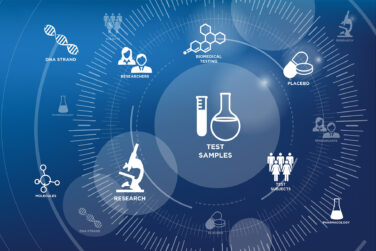Pharma marketers have to deal with a lot of headache-inducing complexities and restrictions that don’t impede their counterparts in less regulated industries.
First, as every pharma marketer knows, Medical Legal Regulatory (MLR) review and approval is a legal layer of consumer protection, confidence, and clarity.
The demands on MLR teams means marketers’ time interacting with them can be limited. That adds great complexity to marketing strategies but also means getting communications right the first time is vital. But as we’ll explore later, it does also bring opportunities to codify compliance, decrease duplication of work, and increase focus on new initiatives.
Second, marketing processes in this industry tend to be outdated. That’s not helped by a reliance on dated software configurations that have not kept pace with the speed of evolution of marketing operations. The key is to drive more efficient practices from the enterprise stack.
Current processes used by many pharma companies include building campaigns with bespoke coding and duplicative review and approval chains. This is time-consuming, leaves far too much room for human error, and can dramatically slow speed-to-market for new products.
Third, a further problem created by slow and manual processes is the lack of testing and insight they allow for. Unlike sectors where automation is prevalent, there just isn’t capacity for constant cycles of testing, learning, and development of creative to optimize campaigns.
Fourth, many pharma companies employ multiple external marketing agencies and consultants alongside their in-house creative teams. This can create a cocktail of different approaches, with competing interests and a requirement to integrate strategies with minimal inefficiency. The knock-on effect is an obscured view of which types of content perform well against marketing objectives—meaning further opportunities to learn and to optimize campaigns are lost.
Helping Pharma Marketers to Feel Better
If that list is enough to give pharma marketers sleepless nights, solutions now exist that can soothe their pain points. In fact, content automation technology alone offers pharma marketers several advantages.
For every pharma marketer, the MLR process is vital to getting promotional material into market. Accelerating workflows both upstream and downstream of MLR, and enabling consistent, accurate submissions to the MLR team, makes a big difference.
Automation helps here, establishing patterns and design systems and standards that can be pre-approved and FDA compliant. This provides confidence in the structures and layouts marketers want to use to promote new or revised content.
The cutting-edge aspect of the technology is another advantage that can bring marketing processes up to date. Evaluating existing operations to replace with content automation tools allows organizations to scale outputs and drive better key performance indicators (KPIs) without busting budgets. The approved brand guidelines and standardized designs included in master templates are a key example of automation in action.
Expediting speed-to-market, agility, and increased efficiency is also closing the loop between insight and execution, as highlighted earlier. With a focus on learning and producing more content for the market, more data is unlocked to leverage for future campaigns.
In addition, content platforms enable automated and streamlined management of asset metadata, tagging, usage tracking, and searchability. This is perhaps the coolest bit of content automation: every single atomic design component of an ad is stored with embedded brand taxonomy and machine-vision tagging. This turns content into data, making it easier to organize, manage, use, optimize, and reuse.
Overall, these aspects of content automation combine to propel strategy and personalization to new heights—surely a tonic for any pharma marketer.












